Iconic Images of Detroit’s Past
History Through the Lens of The Detroit News
On the cover
FRONT COVER A fleet of Detroit News trucks lines up on Congress, looking west, between Shelby and Wayne (now Washington Boulevard), circa 1912–14.

FRONT COVER A fleet of Detroit News trucks lines up on Congress, looking west, between Shelby and Wayne (now Washington Boulevard), circa 1912–14.
Copyright © 2021 by The Detroit News
All Rights Reserved • ISBN: 978-1-59725-995-8 No part of this book may be reproduced, stored in a retrieval system or transmitted in any form or by any means, electronic, mechanical, photocopying, recording or otherwise, without prior written permission of the copyright owner or the publisher.
Published by Pediment Publishing, a division of The Pediment Group, Inc. • www.pediment.com Printed in Canada.
Iconic Images of Detroit’s Past
All images are from The Detroit News Photo Archive unless otherwise noted. Original negatives of The Detroit News are housed at the Walter P. Reuther Library at Wayne State University. We appreciate their assistance on this project.
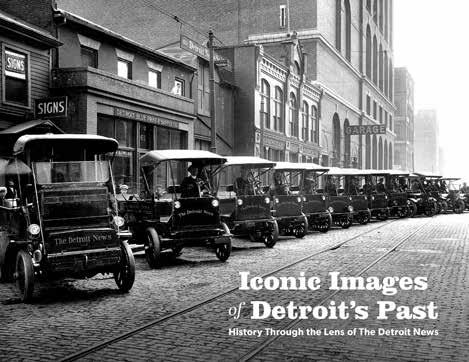
Gary Miles, Editor and Publisher
Kevin J. Hardy, Managing Editor
Aaron Velthoven, Vice President, Marketing, Communications & Events
Marcy L. Viselli, Consumer Marketing Brand & Events Specialist
Chapter
photo research by Charlotte Massey
Editing and photo research by Charlotte Massey, Pam Shermeyer, Bill McMillan, and Brad Fenison
The Detroit News has unlocked its amazing photo archives to bring you Iconic Images of Detroit’s Past, a collection of our photographers’ best images captured before 1940.
For generations, The Detroit News has provided daily snapshots of Greater Detroit. Our newspaper has a long reputation for outstanding photography and thousands of those photographs have been digitally preserved. Now you can enjoy some of our photojournalists’ most memorable work in these pages.
These pictures tell the stories of late 19th- and early 20th-century life in Greater Detroit. Even from the earliest days of photography, the archives of The Detroit News depict our city through images of Griswold Street during the Civil War, the Detroit Zoo on Michigan Avenue in 1883, and the aftermath of a windstorm that leveled the Eastern Market in the 1890s.
In chapter two, you’ll see images of a growing, thriving city dealing with the
development of mass transportation, a rising skyline, and immigration. Yet we were never too busy to take time for a little recreation on Belle Isle, an afternoon ballgame at Bennett Park, or an evening at the Detroit Opera House. You’ll also see early glimpses of a burgeoning automobile industry that would come to define the Motor City.
Detroit charged into the next decade, fueled largely by the innovations of Henry Ford and his Model T assembly line. A desperate need for workers led to a doubling of the city’s population from 1910 to 1920. And then it was World War I that dominated the pages of The Detroit News with gripping images of women tearfully watching their men go off to war, followed by jubilation when they came home victorious.
The newspaper’s photo coverage of the Roaring Twenties is highlighted by images of sports celebrities, recreation, speedboats, speakeasies, and bootlegging. The decade and chapter close with absolutely
stunning images of the construction of the Ambassador Bridge. The stock market crash on October 24, 1929, would usher in a new decade with new challenges.
The Great Depression hit Detroit—and all of Michigan—hard. Wage cuts and vanishing jobs led to a drop in Detroit’s population for the first time in history. But in the midst of the Depression and labor strife that gripped the city, sports provided a much-needed lift. The Detroit Lions won their first NFL championship in 1935, the Tigers won the World Series in 1935, the Red Wings won the Stanley Cup in 1936, and Detroit boxer Joe Louis won the heavyweight title in 1937. Detroit earned the title of “City of Champions.”
We hope this timeless record of Greater Detroit’s history will educate and enlighten the next generations about this beautiful place we call home.

The Detroit News autogiro flies over Downtown Detroit in February 1931, the year it was launched. The aircraft was used for news gathering and aerial photography. It had a four-bladed rotor mounted on a tripod above the body of a conventional airplane, and was powered by a 300-horsepower Wright engine and standard steel propeller.
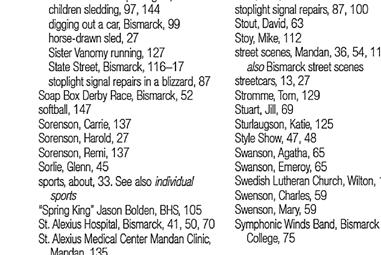
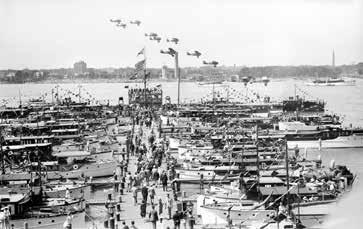
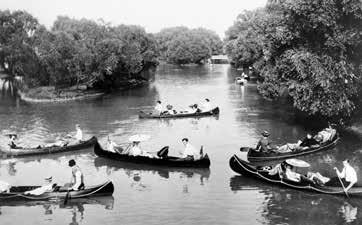

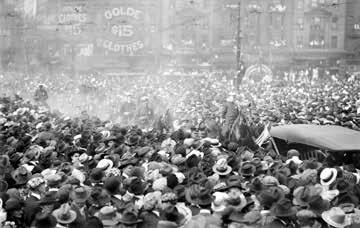



When Detroit burned to the ground in 1805 in a fire that started in the stables of the town baker, about 600 residents and their animals fled to the river for safety. They survived, but the fur trading settlement established a century earlier by France’s Antoine de la Mothe Cadillac was destroyed. The fire is commemorated in the seal of the city, which shows two women, one weeping as a building burns behind her, while her companion comforts her, with a new building in the background. The Latin words on the seal read Speramus meliora; resurget cineribus, which translates to We hope for better things; it will rise from the ashes.
Rise from the ashes it did. By 1900, Detroit was a major industrial city with 285,704 residents, and poised to become the automotive capital of the world. What was behind the growth of one of America’s greatest boom towns?
The location was key. The city takes its name from the French—détroit means strait, or the narrowest part of a river— and Cadillac chose his spot on the river linking the Great Lakes system carefully, building Fort Ponchartrain and the

surrounding settlement where the French could defend it against their British rivals. The Ottawa, Potawatomi and Chippewa people had traded on a route that passed what became Detroit for a thousand years before European explorers arrived. The French in the small frontier outpost continued the practice, bartering for the beaver pelts craved by fashion-conscious Europeans with goods like blankets, rifles and metal tools. In its first hundred years, the town surrounded by a wooden stockade grew slowly.
Detroit was quickly rebuilt after the fire, and had gone from French to British and then American rule when the Erie Canal was completed in 1825. The time to reach the resource-rich Great Lakes from the East Coast was cut from weeks to days. The city’s population boomed. Michigan entered the Union as a free state in 1837, and Detroit was an important stop on the Underground Railroad, a secret network that helped people fleeing slavery in the years leading up to the Civil War escape to freedom.
The city quickly grew into a thriving commercial center where lumber, iron
and copper ore shipped through the Great Lakes from northern Michigan was processed and sent east. Immigrants from Germany and Ireland started arriving in the 1820s and ’30s, followed by people from Poland, Italy and the American countryside. In 1860, around the time of the earliest photographs in this chapter, 45,619 people called the city home. The municipal fire department was established that year, and the Detroit police department followed in 1865. James E. Scripps founded The Detroit Evening News, the forerunner of The Detroit News, in 1873.
By the end of the century, the city was a leader in the manufacture of railroad cars, cast iron stoves and ships. Detroit was also home to breweries, seed and chemical companies.
The area’s diverse industries attracted highly-skilled workers and entrepreneurs, and as early automotive pioneers like Henry Ford started tinkering with horseless carriages, the former trading post on the river had the people and knowledge in place to take on its next role: America’s Motor City.
This police station was established on Belle Isle in 1889, with Sergeant Cahoon, far left, in charge. Detroit did not have an organized police department until 1865. From its founding in 1701 until the middle of the nineteenth century, the growing city was policed by various patrols and watchmen.
ABOVE Workers in a Detroit salt mine. Vast expanses of salt deposits formed under what later became Detroit millions of years ago, and were discovered in 1895. The first mining for rock salt began in 1910.
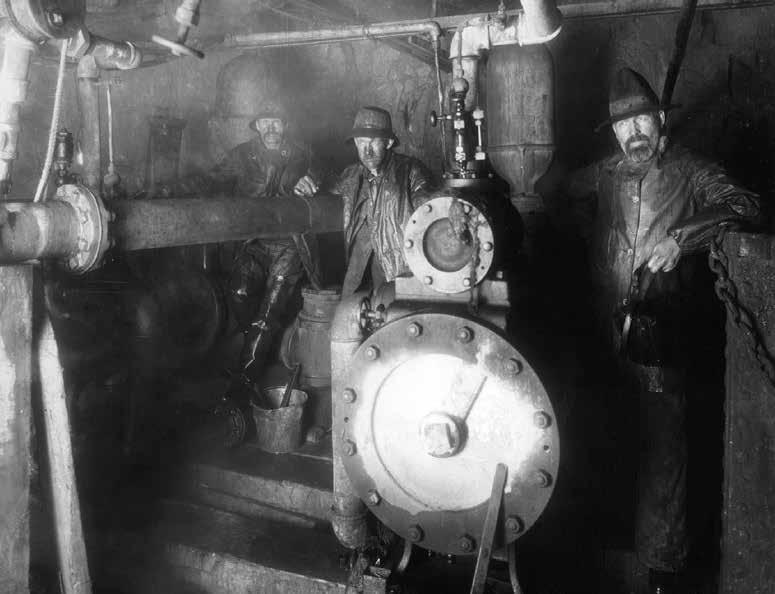
ABOVE RIGHT Members of Detroit’s Polish community wearing national costumes ride in a cart, May 18, 1920.

OPPOSITE Don’t let the smiles fool you—Babe Ruth (left) and Tigers star Ty Cobb didn’t like each other. Cobb always resented the way the Detroit fans warmed up to the Babe whenever he performed there. While the fans hoped that Ruth would hit one of his legendary tape-measure home runs, Cobb would do a slow burn as he saw his reputation as the game’s dominant player slip away.
RIGHT Horace Dodge positions a curling stone on a frozen lake, probably Lake St. Clair. Horace and his brother John were lifelong business partners and friends. Starting as mechanics, they became suppliers for Ransom Olds and Henry Ford, and launched their own iconic brand in 1914. John Dodge died in January 1920 in the aftermath of the Spanish flu pandemic, and Horace would die in December of that year.

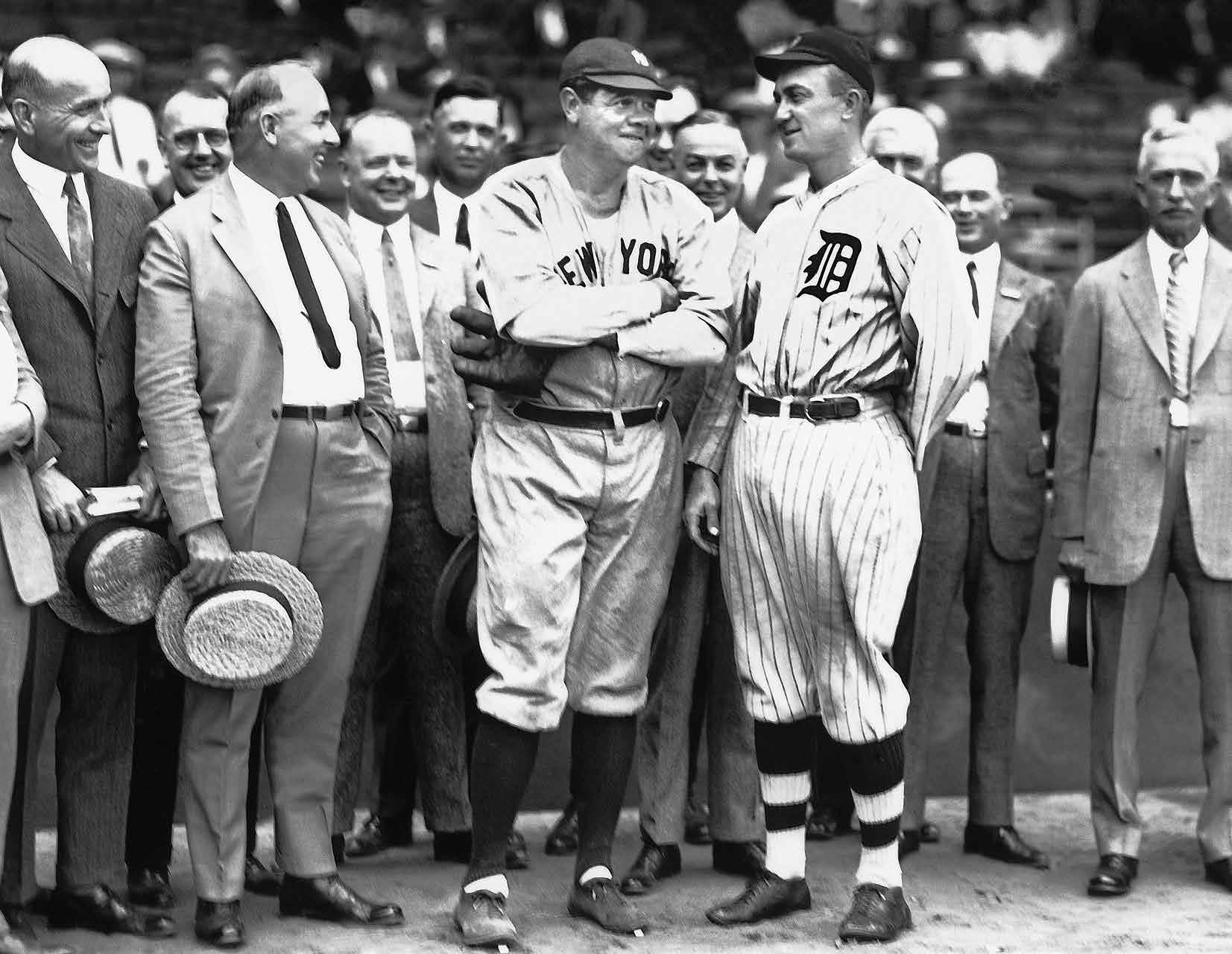
ABOVE A smuggler wears a simple device to help him hide multiple bottles of liquor under his coat during Prohibition. Detroit, with its proximity to an international border with Canada, was a bootlegging hub in the era when the manufacture, sale and transport of alcohol was prohibited by the US Constitution.

RIGHT Crowds line up outside the Michigan Theater in 1926. Owners of the thirteen-floor Michigan Building gutted the onceglorious theater in the 1970s and turned it into a parking structure.
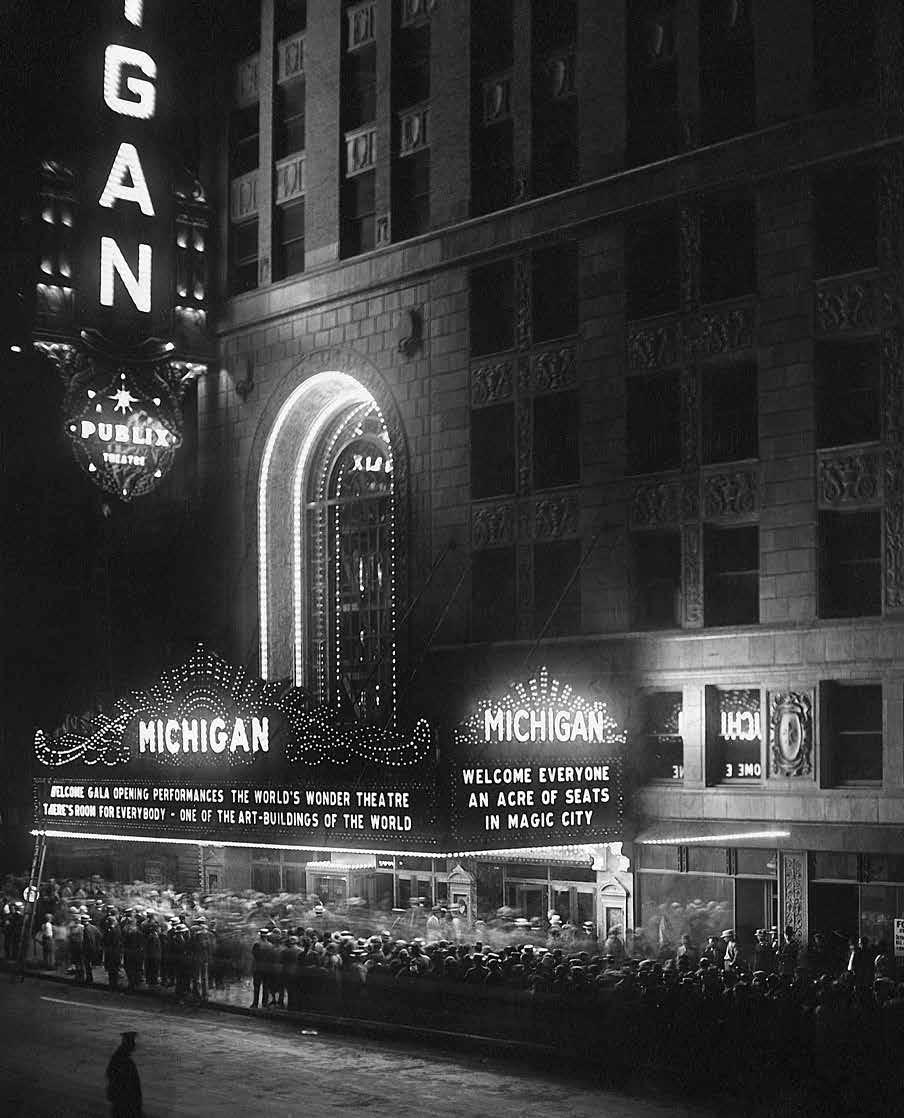
Twelve weeks after his celebrated New York-to-Paris solo flight in 1927, Charles Lindbergh made a stop in Detroit, where thousands turned out to celebrate the city’s favorite son. The aviator, who was born in Detroit, was accompanied by his mother Evangeline.
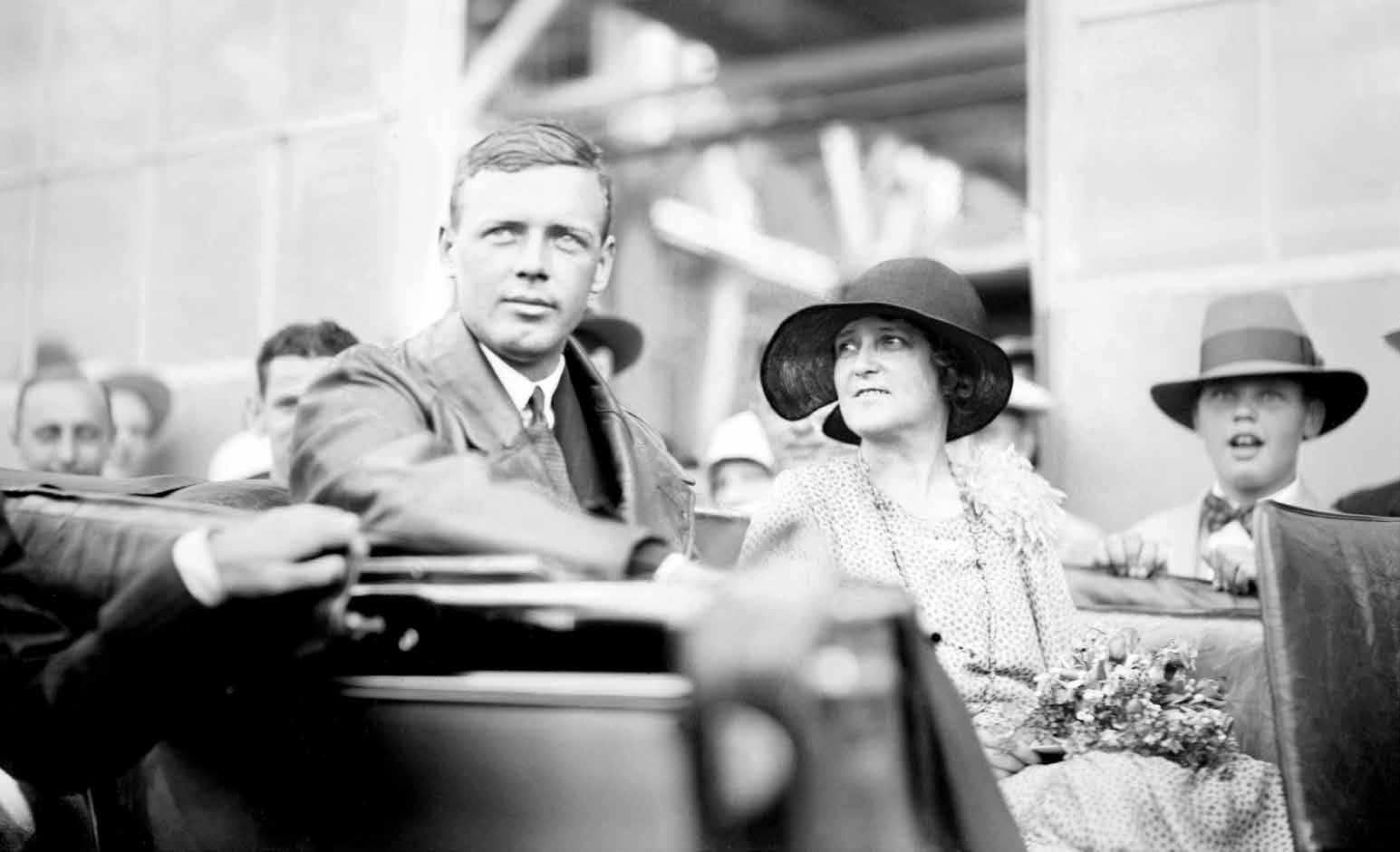

ABOVE Purple Gang members hide their faces from the camera in May 1929 after they were arrested on charges of providing protection to Detroit narcotics dealers. Over the years gang members were accused of hijacking, bootlegging, extortion, kidnapping, and murder. Among the organized crime groups in Detroit during Prohibition, the Purple Gang were unmatched in ruthlessness.

OPPOSITE On August 26, 1929, The Detroit News launched Michigan’s first aircraft dedicated to news gathering—a Lockheed Vega, seen here flying over downtown Detroit.

LEFT Fifty years after his creation of the first incandescent electric lamp, Thomas Edison (left) reenacts the event during the dedication of Henry Ford Museum and Greenfield Village, October 21, 1929. Francis Jehl (right) assists as Henry Ford observes. Jehl, an Edison assistant at the time of the lamp experiments, worked in his restored Menlo Park laboratory in Greenfield Village until his death in 1941.
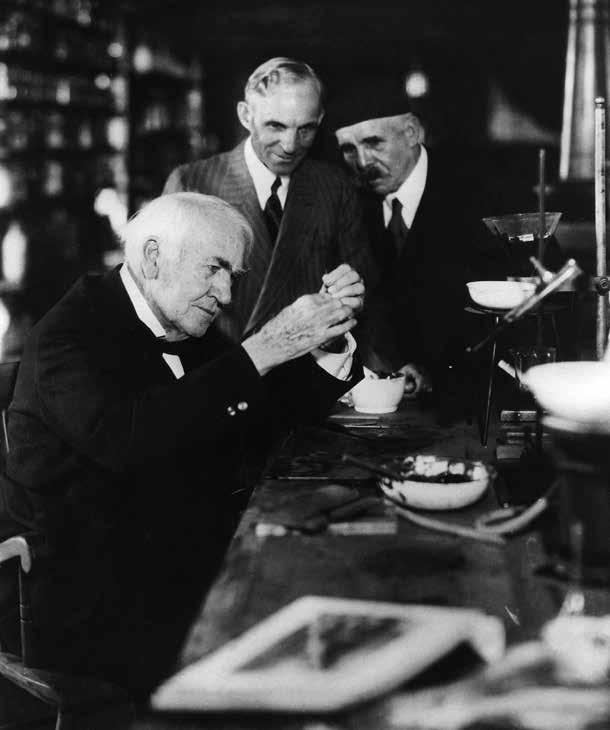

ABOVE Gratiot Avenue in Detroit, April 10, 1933.

LEFT Horace Dodge Jr.’s sister, Delphine Dodge Baker, becomes the first woman to ever drive a boat in Gold Cup competition, on September 7, 1933.
OPPOSITE Detroit News employees enjoy themselves at Adams Restaurant in Detroit in 1933, the year Prohibition ended. Incidentally, they’re drinking Edelweiss beer, a Chicago brew.
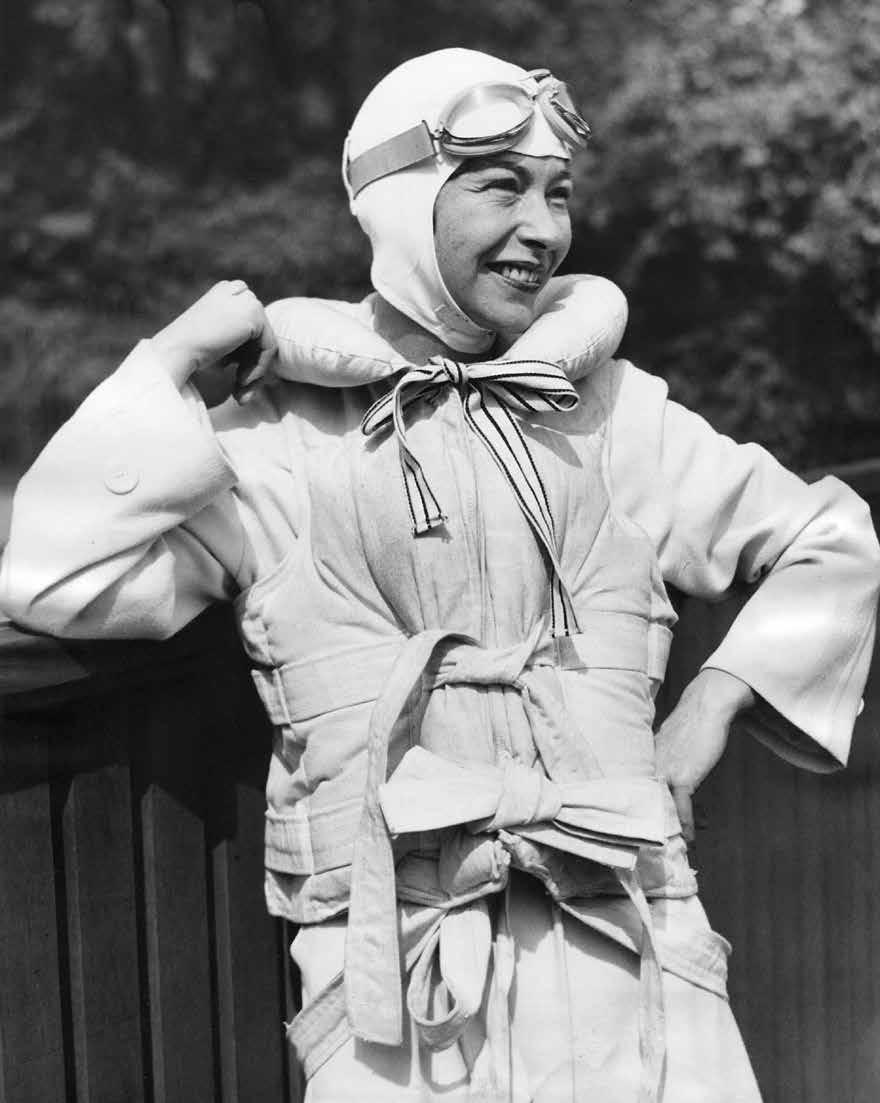

ABOVE Soap Box Derby competitors leave the starting line of the 1937 Detroit race, sponsored by The Detroit News and Chevrolet. The winner went on to the All-American Soap Box Derby finals in Akron, Ohio.

OPPOSITE When Electric Park closed, the roller coaster was disassembled and rebuilt in Eastwood Park. Eastwood had a shooting range, freak-show tent, merry-go-round, large pool, rides, and even a coin-operated machine that tested how much electricity you could stand before you had to let go. The scene above is from July 1937.

RIGHT Women work in a sewing factory at West Jefferson and Clark in Detroit in 1939. The vast majority of women in the WPA either were not married, or were married to a man who could not work because of a disability or because he was not between the ages of sixteen and sixty-five.
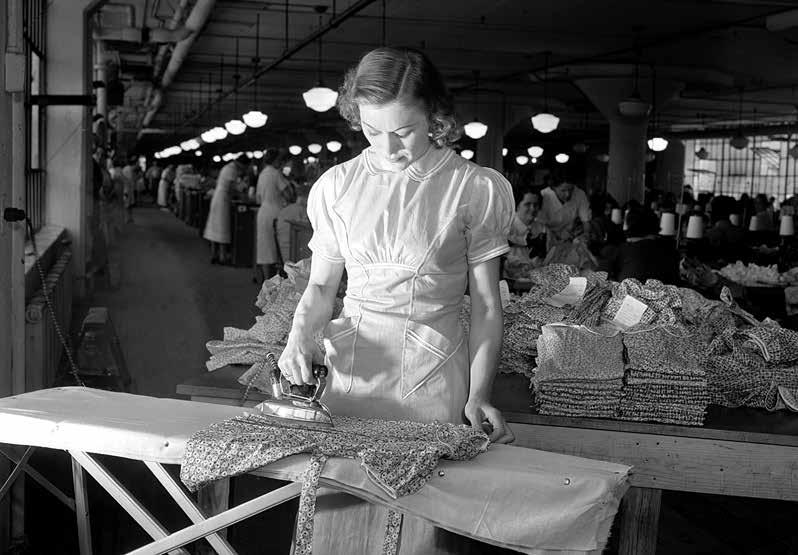
OPPOSITE WPA workers demonstrate outside of the G.A.R. Building in Detroit against wage cuts and layoffs on April 22, 1939. The G.A.R. building was used as one of the administration buildings for WPA projects during the tenure of the program in the area.

BELOW RIGHT A picketing Briggs Manufacturing employee is led away by police at Briggs Stadium in 1939.

